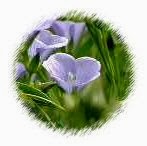You want to be eco-friendly, but you’ve read bad things about bamboo, you’ve never heard of Modal® and you have no idea where linen fits into all of this. No worries, FaeriesDance.com has you covered.
There are 3 factors considered when determining the most eco-friendly fabrics:
- The sustainability of the input materials,
- The harshness/toxicity of any chemicals required for processing,
- Production waste.
With that in mind, here’s our well-reasoned and researched (but not scientifically tested), Most Eco-Friendly Fabrics list.
1. Hemp
Marijuana’s non-psychotropic cousin leads the list in eco-friendly fabrics. It is indeed a weed, growing prolifically without the need for pesticides, herbicides or extensive amounts of fertilizer. It uses very little water compared to other fabric crops. Hemp stalks can be directly spun into yarn without any chemical inputs and there is essentially no production waste from yarn to fabric. Hemp was used extensively in the USA up until 1937 when it was included in the Marijuana Tax Act. Since industrial hemp cannot be used as a stimulant, there is some speculation that it was included in the Act as a way to minimize competition for timber-based paper and nylon fabrics. The first USA flag was made from hemp.
2. Organic Linen

The Flax plant is moderately easy to grow, and when grown organically without chemical pesticides or herbicides, is very eco-friendly. The outer layers must be retted to get to the inner core which can be directly spun into yarn. Retting of organically grown flax can be done with water alone; no chemicals are required. Only natural, biodegradable waste products are produced.
3. Organic Cotton
Cotton is a very water-intensive crop. So even organically grown cotton, which can be spun directly into yarn, falls lower on the eco-scale than hemp or linen; while conventionally grown cotton is off the eco-chart completely. Organic cotton is the most commonly used eco-fabric as it’s softer than hemp and doesn’t wrinkle like linen does. It’s readily available, reasonably priced, and one of the most versatile fabrics on the list.
4. Tencel® / Modal®
There’s a tie at the number 4 spot between two Lenzing developed fabrics, Tencel™ and Modal®. Both fabrics are man-made from tree cellulose using Lenzing’s eco-award winning processes which include low-toxicity chemicals along with closed-loop, very low waste, production systems. The resulting fabrics drape beautifully. Tencel® has been shown to have moisture management and bacterial resistance properties, while Modal® has unparalleled softness. Seriously, even cotton seems rough next to Modal’s liquid silk feel.
5. Bamboo / Soy

Spot 5 results in another tie, this time between Bamboo and Soy fabrics. Both of these have fantastic input materials. Bamboo is the fastest growing woody plant on the planet. (It’s actually a member of the grass family.) Soy is created using the discarded, inedible outer casing of soybeans, essentially reclaiming a waste product. While 89% of USA grown soy is now GMO, most soy fabric is made in China using non-GMO soy. Unfortunately, in 2013, China approved the import of GMO soy seeds. So this will be something to watch in the future. The reason these two near-perfect input materials are way down at number 5 is that both require a fair amount of chemicals to process into fabric. So they fall lower in the chemical and production waste categories.
6. Recycled PET
This video is the best one we’ve seen on the details of how to turn plastic bottles into polyester fleece clothing. In truth, putting this at number 6 versus number 5 is fairly arbitrary. This is a very energy-intensive process, but requires fewer chemicals than in bamboo or soy fabric production. So it’s a little hard to judge which is better. Polyester is very beneficial in some applications like swimwear, and keeping all that non-biodegradable plastic out of our oceans and landfills is a very good thing.
Caveats
Choosing any of these fabrics over conventional cotton, polyester, nylon or rayon is a big step in the eco direction. However, fabric is only one piece of the eco-friendly puzzle. The very cleanest hemp fabric that is conventionally dyed and doused with chemical finishes will fall lower on the sustainability scale than a low-impact dyed bamboo with no finishing agents. If you choose something certified under Global Organic Textile Standards (GOTS) or OEKO-TEX 100 standards, you can be certain the dyes and finishes are non-toxic and free of harsh chemicals.
Workers rights and Fair Trade practices should figure into your evaluation of eco-friendly. One can argue whether a fair-trade, conventional cotton shirt is better or worse than an organically-grown cotton shirt made under unsustainable working conditions such as those in the recent Bangladesh incident. Happily, GOTS certification also includes some reasonable working condition requirements for employees.
Intentionally missing from this list are controversial animal-derived fabrics such as wool and silk. Hand-sheared, free range wool can be very high on the eco-scale (perhaps second or third), providing a synergistic (and often caring) relationship between the sheep and the farmer. However, mass-produced wool using mulesing and factory-farming techniques has no business in eco-fashion.

Laura Hughes
This is such a useful post! I actually thought "I wish someone would just tell me the most eco-friendly fabrics" and then I found this.